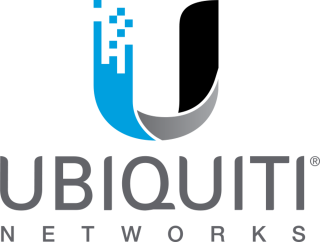In the rapidly evolving landscape of software development and IT operations, understanding what is DevOps has become essential for anyone looking to improve deployment, reliability, and the overall efficiency of their product life cycles. At its core, DevOps represents a cultural and professional movement that emphasizes collaboration, communication, and integration among all stakeholders involved in the development, operations, and delivery of software. This approach not only streamlines processes but also significantly enhances the reliability and quality of products in a competitive market. As organizations continue to adopt this methodology, grasping the essence of DevOps and its impact on the world of software development and operations becomes critical for ensuring continuous improvement and innovation.
This article will guide you through the foundational elements of the DevOps philosophy, illustrating how it facilitates a seamless integration between development and operations teams. You will gain insights into the DevOps toolchain, exploring how various DevOps tools support the automation of the CI/CD pipeline, and thus, contribute to the reliability and efficiency of product delivery. Additionally, we will delve into real-world applications of DevOps practices, the pivotal role of culture and team structure in a DevOps environment, and the metrics to measure DevOps success. Understanding common pitfalls and how to avoid them will also be discussed, providing a comprehensive roadmap for those wondering what is DevOps engineer’s role and responsibilities in navigating the complexities of modern software delivery.
The DevOps Philosophy
DevOps is a transformative philosophy that merges software development (Dev) and IT operations (Ops) to enhance collaboration and streamline the entire application lifecycle. This approach not only accelerates the delivery of software but also ensures higher quality and reliability. At the heart of the DevOps philosophy are several core practices: breaking down silos, fostering collaboration, continuous improvement, and automating processes.
Breaking Down Silos
Traditionally, development and operations teams operated in isolation, which often led to inefficiencies and miscommunication. DevOps challenges this by promoting a culture where silos are dismantled, encouraging open communication and shared responsibilities. This integration helps in minimizing bottlenecks and enhances the speed and quality of software delivery. By recognizing and addressing these silos, teams can foster a truly integrated environment that drives product adoption and increases overall engagement.
Fostering Collaboration
The essence of DevOps lies in its ability to foster collaboration across all teams involved in software development and deployment. This collaboration is facilitated through regular communication and joint problem-solving efforts, which help in aligning the teams towards common goals. Tools like Slack, Microsoft Teams, or Jira enhance this process by providing platforms for seamless communication. Regular meetings and shared objectives further ensure that every team member understands how their work contributes to the organization’s success.
Continuous Improvement
DevOps is not static; it thrives on continuous improvement. Inspired by methodologies like Kaizen, DevOps encourages ongoing refinement and optimization of processes, tools, and team dynamics. This culture of continuous improvement is supported by engaged leadership and a transparent approach to sharing suggestions and achievements. Techniques like the Plan-Do-Check-Act (PDCA) cycle facilitate systematic reviews and adaptations, ensuring that improvements are consistently implemented and benefits are realized across the board.
Automating Processes
Automation stands as a cornerstone of the DevOps philosophy. It involves the use of advanced tools and technologies to automate repetitive tasks across the development and operations lifecycle. From continuous integration and continuous deployment (CI/CD) to infrastructure as code (IaC), automation increases efficiency, reduces errors, and allows teams to focus more on strategic tasks. Tools such as Jenkins for integration, Ansible for configuration management, and Docker for containerization are integral to enhancing the automation processes within DevOps practices.
By embracing these principles, organizations can not only enhance their operational efficiency but also create a more agile and responsive IT environment. The DevOps philosophy, with its focus on collaboration, improvement, and automation, ultimately leads to faster delivery of higher-quality software that better meets the needs of customers and the business.
The DevOps Toolchain
In the world of DevOps, the toolchain is crucial for streamlining and optimizing the software development lifecycle. It comprises a variety of tools designed to facilitate collaboration, automation, and continuous delivery. Let’s explore the key components of the DevOps toolchain and how they contribute to efficient DevOps practices.
Source Control Management
Source control management (SCM) tools, like Git and Subversion, are foundational in any DevOps environment. They allow you to manage code changes, track revision history, and facilitate collaborative coding. By using branches, developers can work on features or fixes in isolation, then merge changes into the main project without disruption. This system not only enhances collaboration but also maintains a clear audit trail of modifications, crucial for pinpointing issues and rolling back if necessary.
Build Tools
Build tools automate the creation of executable applications from source code. This includes compiling, linking, and packaging the code. Tools such as Apache Maven and Gradle streamline these processes, reducing manual errors and enhancing consistency across builds. These tools are integral in managing project dependencies and ensuring that software artifacts are ready for deployment.
Continuous Integration Servers
Continuous integration (CI) servers automate the testing and building of code, ensuring that the integration of new code changes is seamless and error-free. Tools like Jenkins and Bamboo play a critical role here. They help detect integration errors early, streamline the build process, and maintain the quality of the codebase. This automation is vital for supporting high-paced development environments and frequent code updates.
Configuration Management
Configuration management tools automate the setup and maintenance of software and hardware, increasing the stability and agility of systems. Tools such as Ansible, Puppet, and Chef help define and maintain consistent configurations across environments, reducing discrepancies and ensuring that applications perform as expected across different settings. This automation extends from managing servers to deploying applications, making the infrastructure management more predictable and error-free.
Deployment Tools
Deployment tools automate the process of deploying software to production environments. They ensure that the software delivered is consistent with the development and testing stages, thereby reducing the chances of errors in the production environment. Tools like Kubernetes and Docker help manage containerized applications, enhancing the scalability and reliability of deployments. Continuous deployment practices enabled by these tools allow for rapid iterations and improvements based on real-time user feedback.
By integrating these tools into a cohesive toolchain, DevOps teams can achieve faster deployments, better software quality, and more efficient project management. The right combination of these tools tailored to the specific needs of a project or team can significantly enhance the agility and effectiveness of the development process.
DevOps Practices in Action
Continuous Integration Workflow
In DevOps, continuous integration (CI) is pivotal, automating the integration of code changes from multiple contributors into a single software project. This practice allows developers to frequently merge code changes into a central repository, where builds and tests are then run. Automated tools assert the new code’s correctness before integration, significantly reducing integration issues.
A source code version control system is essential in the CI process, supplemented by automated code quality tests and syntax style review tools. This setup enables developers to work independently on features in parallel, merging these into the end product rapidly and independently. CI is a core DevOps process that scales up the engineering team’s output and delivery, enhancing collaboration between development and operations teams.
Continuous Delivery Pipeline
Following CI, the continuous delivery (CD) pipeline automates the delivery of software to production environments. This pipeline ensures that any new code changes integrated during CI are automatically built, tested, and prepared for release. CD extends to automatically deploying these changes to production, enabling a seamless flow from code commit to deployment.
In practice, continuous deployment means that changes could go live minutes after being written, assuming they pass automated testing. This rapid integration and deployment process allows for frequent and incremental updates, improving user feedback integration and overall customer satisfaction.
Infrastructure as Code Implementation
Infrastructure as Code (IaC) is a transformative practice within DevOps, using programming languages and machine-readable code to manage and configure computing infrastructure. This approach automates the provisioning process, allowing developers to execute scripts to set up infrastructure, ensuring environments are quickly and consistently ready for application deployment.
IaC supports both mutable and immutable infrastructures, providing flexibility in managing and scaling environments. Tools like Ansible and Terraform are used to define infrastructure requirements, which are then managed through version control systems like Git to enhance collaboration and consistency across teams.
Monitoring and Logging Strategies
Effective monitoring and logging are integral to DevOps, providing continuous feedback and enabling the cycle of continuous integration, delivery, and deployment. Developers instrument their code with logging statements to capture relevant information, which aids in debugging and optimizing application performance.
Monitoring tools like Prometheus and Grafana collect and visualize metrics, offering insights into system performance and health. These tools are complemented by logging solutions like the ELK Stack, which centralizes log data for easy analysis and troubleshooting. Together, these strategies ensure that DevOps teams can maintain high availability, performance, and reliability of applications and infrastructure.
DevOps Culture and Team Structure
T-shaped Skills
In DevOps, fostering T-shaped professionals is crucial. These individuals possess deep technical expertise in specific areas alongside broad, cross-disciplinary knowledge, enabling them to handle end-to-end responsibilities effectively. This versatility enhances team performance and drives efficient DevOps execution. By encouraging continuous learning and upskilling, you can cultivate a team of T-shaped professionals who are well-equipped to adapt to new challenges and collaborate across different functions.
Cross-functional Teams
Cross-functional teams are pivotal in DevOps, breaking down traditional silos and enhancing collaboration. These teams integrate skills from development, operations, and beyond, ensuring all aspects of the software development lifecycle are addressed. By fostering a culture of teamwork and shared responsibility, cross-functional teams accelerate product delivery and improve project outcomes. Regular communication and joint problem-solving sessions further solidify the team’s effectiveness, making it easier to innovate and respond to changes swiftly.
DevOps Roles and Responsibilities
DevOps roles blend the lines between traditional development and operations tasks, creating a unified approach to software delivery. Team members may specialize in areas like CI/CD, infrastructure as code, or automation but are also expected to contribute across the spectrum. Leadership plays a key role in guiding these teams, promoting a culture of continuous improvement and learning. By empowering team members to take initiative and make decisions, you enhance their ability to contribute to the team’s success.
Building a Learning Organization
At the core of DevOps is the concept of a learning organization, where continuous improvement is embedded into the culture. Leaders set the tone by promoting curiosity and supporting skill development. Workshops and collaborative learning experiences play a significant role in this process, allowing team members to share knowledge and develop new skills together. Additionally, forming communities within the organization helps disseminate best practices and fosters a culture of mentorship and continuous growth.
By integrating these elements into your DevOps culture and team structure, you create an environment that not only supports efficient and effective software delivery but also adapts to the evolving landscape of technology and business needs.
Measuring DevOps Success
Key Performance Indicators
In the realm of DevOps, measuring success hinges on the effective use of Key Performance Indicators (KPIs). These indicators provide you with insights into the efficiency and productivity of your DevOps processes. Key metrics such as deployment frequency, change failure rate, and Mean Time to Recovery (MTTR) offer a quantitative foundation to gauge the impact and business value of your DevOps initiatives. By tracking these metrics, you can make informed decisions regarding resource allocation, cost management, and enhancing customer satisfaction.
DORA Metrics
The DevOps Research and Assessment (DORA) metrics are pivotal in assessing the performance of DevOps teams. These metrics include deployment frequency, lead time for changes, change failure rate, and time to restore service. DORA metrics help you understand both the velocity and stability of your software delivery, providing a balanced view of throughput and quality. By evaluating these metrics, DevOps and engineering leaders can pinpoint areas of improvement, ensuring that the software delivery process is both fast and reliable.
Continuous Feedback Loops
Continuous feedback loops are essential for maintaining and enhancing the quality of DevOps practices. This process involves regular collection and analysis of feedback from all stakeholders, including developers, operations staff, and end-users. By integrating feedback directly into the development cycle, you can address issues promptly and refine your processes continuously. This ongoing loop of feedback and improvement fosters a proactive environment where enhancements are consistently driven by actual user experiences and operational data.
Data-driven Decision Making
Embracing a data-driven approach in DevOps is crucial for optimizing performance and achieving strategic goals. This involves collecting a wide range of data points from the development and operations processes and analyzing them to inform decisions. Data-driven decision making enables you to identify bottlenecks, predict potential issues, and implement solutions that are informed by real-time data. Moreover, this approach aligns your DevOps practices with business objectives, ensuring that every decision contributes to the overarching goals of your organization.
By leveraging these methodologies, you can ensure that your DevOps practices not only meet current demands but are also poised to adapt and thrive in an ever-evolving technological landscape.
Common DevOps Pitfalls and How to Avoid Them
Tool Obsession
One of the more common pitfalls in DevOps is an excessive focus on tools. While tools are essential for automating processes and enhancing efficiency, obsessing over them can lead to neglecting the underlying processes they are meant to improve. It’s crucial that you understand your development and operational needs first before selecting tools that align with those needs. Over-automation without a clear understanding of requirements can lead to complications rather than solutions, making it essential to balance tool use with strategic planning.
Ignoring Culture
DevOps is not just about tools and processes; it’s fundamentally a cultural shift. Ignoring the cultural aspects of DevOps—such as collaboration, continuous learning, and flexibility—can severely hinder its success. Culture sets the stage for strategy and tactics, making it a critical element of DevOps adoption. Organizations that fail to nurture a supportive DevOps culture may find themselves struggling with adoption, regardless of the technologies they implement.
Lack of Executive Support
Executive support is vital for the successful implementation of DevOps practices. Challenges often arise when executives are not fully on board or are resistant to the changes DevOps introduces. This resistance usually stems from a fear of losing control or a lack of understanding of DevOps benefits. To mitigate this, it’s essential to engage with executives early in the process, clearly communicating the benefits and setting realistic expectations. Securing an executive sponsor can provide the necessary support and resources to drive the initiative forward.
Insufficient Automation
While too much automation can be problematic, insufficient automation is also a significant pitfall. DevOps thrives on automating repetitive tasks to free up resources for more complex problems. A lack of automation can lead to slow processes, increased errors, and a failure to scale operations effectively. It’s important to identify which processes can and should be automated to enhance efficiency and reduce the risk of human error. Properly implemented automation not only speeds up the development cycle but also ensures consistency and reliability across deployments.
Conclusion
Throughout this exploration of DevOps, the importance of integrating development and operations through a cultural shift toward collaboration, automation, and continuous improvement has been thoroughly discussed. By embracing the core practices of breaking down silos, fostering collaboration, continuously improving, and automating processes, organizations can significantly enhance their operational efficiency and responsiveness to market changes. The DevOps philosophy, when effectively implemented, leads to faster, more reliable software deliveries that better meet the evolving needs of customers and stakeholders alike.
Moreover, we have delved into the practical applications of DevOps tools and practices, from continuous integration and delivery to infrastructure as code and effective monitoring and logging. Each component plays a critical role in optimizing the software development lifecycle, ensuring that teams can deliver high-quality products with greater speed and efficiency. As the landscape of technology and business needs continues to evolve, the principles of DevOps offer a solid framework for adaptation and growth, promising significant benefits for those who are willing to commit to this transformative approach.
FAQs
- What exactly is DevOps and why is it significant?
DevOps is a practice aimed at unifying the development and operations teams, eliminating the traditional barriers between these two groups. In some organizations, these roles are not distinctly separate, and engineers may handle both development and operations tasks. This integration is crucial for enhancing collaboration and efficiency within the company. - Can you explain DevOps in simple terms?
DevOps is a blend of practices and tools that helps an organization deliver applications and services at a higher velocity than traditional software development methods. This approach is a combination of “development” and “operations.” - What does a comprehensive understanding of DevOps entail?
Understanding DevOps involves recognizing it as both a mindset and a cultural shift within teams. It emphasizes closer collaboration between developers and users to better understand user requirements, and includes operations in the development process to integrate maintenance needs and customer perspectives. - Is DevOps a concept that is easy to grasp for beginners?
For beginners, DevOps can present some challenges. It is a multidisciplinary field that requires knowledge in software development, IT operations, and often security (known as DevSecOps). The breadth of skills needed can make it complex for those new to the field.










